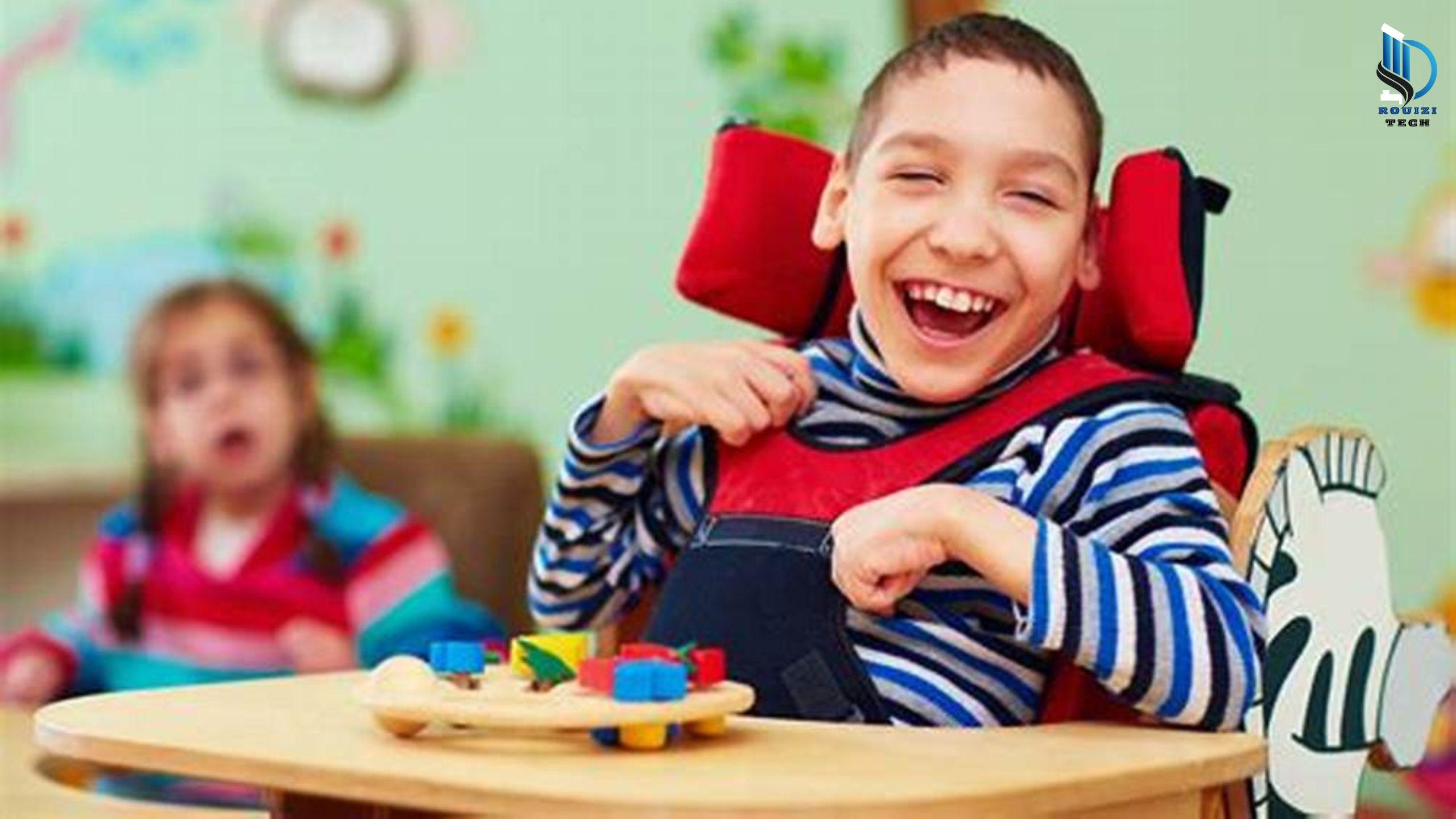How to Deal with Children with Special Needs: Addressing Learning Difficulties in Children
How to Deal with Children with Special Needs: Addressing Learning Difficulties in Children
Understanding how to deal with children with special needs is essential for ensuring their well-being and success. One significant aspect is recognizing and addressing learning difficulties in children. This article provides a comprehensive guide on identifying, supporting, and managing these challenges, offering practical strategies for parents, teachers, and caregivers.
 |
| How to Deal with Children with Special Needs: Addressing Learning Difficulties in Children |
1. Understanding Learning Difficulties in Children
Definition of Learning Difficulties
Learning difficulties in children refer to a range of challenges that affect a child's ability to process, understand, or use information. These difficulties can impact various areas, including reading, writing, math, and communication skills. Common types include dyslexia, dysgraphia, and dyscalculia.
Signs and Symptoms
Identifying learning difficulties in children early is crucial. Common signs include:
- Struggling to keep up with peers in reading or math
- Difficulty following instructions or organizing tasks
- Frequent frustration or avoidance of schoolwork
- Problems with handwriting or spelling
Causes and Contributing Factors
The causes of learning difficulties in children are multifaceted and can include:
- Genetic factors: A family history of learning difficulties can increase the risk.
- Neurological factors: Brain function and structure differences may contribute.
- Environmental factors: Lack of early stimulation or exposure can affect learning.
2. Identifying Learning Difficulties in Children
Early Detection and Assessment
Early intervention is key to managing learning difficulties in children. Assessment methods include:
- Educational assessments: Standardized tests to measure academic skills.
- Developmental screenings: Evaluations to identify delays or issues.
- Observations: Monitoring behavior and performance in various settings.
Professional Evaluation
A thorough professional evaluation by specialists such as educational psychologists, speech therapists, or occupational therapists is often required. These evaluations help in diagnosing specific learning difficulties and developing targeted interventions.
Parent and Teacher Observations
Parents and teachers play a vital role in identifying learning difficulties in children. Observing patterns in behavior, performance, and response to instruction can provide valuable insights.
3. Developing an Individualized Education Plan (IEP)
What is an IEP?
An Individualized Education Plan (IEP) is a tailored plan designed to meet the unique educational needs of children with learning difficulties. It outlines specific goals, accommodations, and support services.
Creating an Effective IEP
Developing an effective IEP involves:
- Collaborating with professionals: Teachers, parents, and specialists work together to create the plan.
- Setting clear goals: Specific, measurable, achievable, relevant, and time-bound (SMART) goals are established.
- Determining accommodations: Adjustments such as extended time for tests or modified assignments are included.
Monitoring and Adjusting the IEP
Regular reviews of the IEP ensure that it remains effective. Adjustments are made based on the child's progress, changing needs, and feedback from teachers and parents.
4. Strategies for Supporting Children with Learning Difficulties
Educational Strategies
Effective educational strategies for learning difficulties in children include:
- Differentiated instruction: Tailoring teaching methods to meet individual needs.
- Assistive technology: Tools such as speech-to-text software or audiobooks.
- Structured routines: Consistent schedules and clear instructions.
Behavioral and Emotional Support
Supporting the emotional well-being of children with learning difficulties involves:
- Positive reinforcement: Encouraging and rewarding effort and progress.
- Stress management: Techniques such as relaxation exercises or mindfulness.
- Building self-esteem: Focusing on strengths and celebrating successes.
Parental Involvement
Parents can support their child's learning at home by:
- Creating a supportive environment: Providing a quiet, organized space for studying.
- Communicating with teachers: Sharing observations and working together to address issues.
- Using educational resources: Engaging with materials that reinforce school learning.
5. Collaborating with Professionals
Types of Professionals Involved
Collaboration with various professionals can enhance support for children with learning difficulties. These may include:
- Special education teachers: Experts in adapting instruction for diverse learning needs.
- Speech therapists: Professionals who address communication challenges.
- Occupational therapists: Specialists who help with motor skills and daily living activities.
Building a Support Team
Assembling a multidisciplinary support team involves:
- Identifying needs: Determining which professionals are needed based on the child’s difficulties.
- Coordinating services: Ensuring that all team members are working towards common goals.
- Regular meetings: Holding meetings to review progress and adjust strategies.
Resources and Support Networks
Utilize resources such as:
- Local support groups: Parent organizations and community groups.
- Online forums: Websites and forums for advice and shared experiences.
- Educational resources: Books, websites, and tools designed for children with learning difficulties.
6. Encouraging Positive Outcomes
Fostering Self-Esteem and Confidence
Building self-esteem in children with learning difficulties involves:
- Providing encouragement: Highlighting efforts and achievements.
- Setting realistic goals: Encouraging progress through achievable objectives.
- Promoting a growth mindset: Emphasizing that skills and abilities can improve with practice.
Setting Realistic Goals
Realistic goal-setting helps children experience success and maintain motivation. Goals should be:
- Specific: Clearly defined objectives.
- Measurable: Easily assessed progress.
- Achievable: Within the child’s ability to reach.
Celebrating Successes
Recognizing and celebrating milestones, no matter how small, can boost motivation and confidence. Celebrations can be:
- Verbal praise: Acknowledging accomplishments with positive feedback.
- Rewards: Small incentives or special activities.
| Main Title | Subtitles |
|---|---|
| Understanding Learning Difficulties in Children | Definition, Signs, Causes |
| Identifying Learning Difficulties in Children | Early Detection, Professional Evaluation, Observations |
| Developing an Individualized Education Plan (IEP) | Definition, Creating an IEP, Monitoring |
| Strategies for Supporting Children with Learning Difficulties | Educational Strategies, Behavioral Support, Parental Involvement |
| Collaborating with Professionals | Types of Professionals, Building a Support Team, Resources |
| Encouraging Positive Outcomes | Self-Esteem, Setting Goals, Celebrating Successes |
| Common Questions About Learning Difficulties in Children | Early Signs, Home Support, Seeking Help, Resources |
| Conclusion | Recap, Encouragement, Call to Action |
Conclusion
Addressing learning difficulties in children requires early identification, effective strategies, and a collaborative approach. By understanding and supporting children’s unique needs, parents and educators can help them thrive academically and emotionally. Utilize available resources and maintain open communication to ensure the best outcomes for children with special needs.
Common Questions
1- What are the early signs of learning difficulties?
Early signs include struggles with reading, writing, or math, difficulty following instructions, and frustration with schoolwork.
2- How can I support my child’s learning at home?
Create a supportive study environment, communicate with teachers, and use educational resources to reinforce learning.
3- When should I seek professional help for my child?
Seek help if your child shows persistent difficulties in learning or if struggles impact their emotional well-being.
4- What are the best resources for parents of children with learning difficulties?
Consider local support groups, online forums, educational websites, and professional resources for guidance and support.
5- How can I help my child build self-esteem?
Encourage their efforts, set achievable goals, and celebrate their successes to build confidence and self-esteem.




.jpg)


